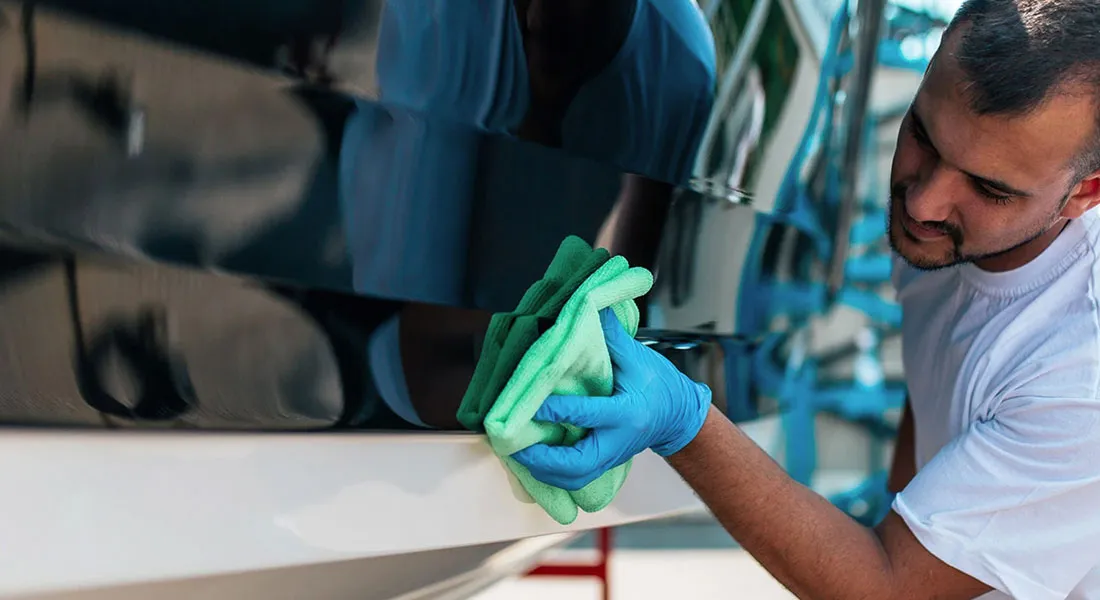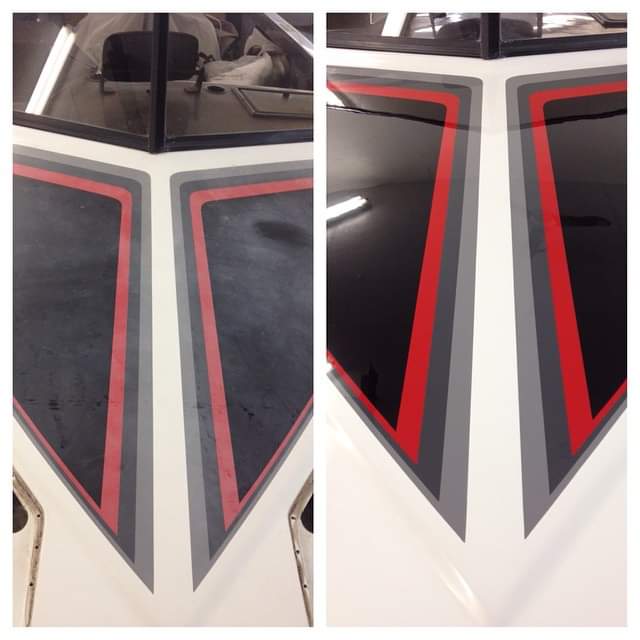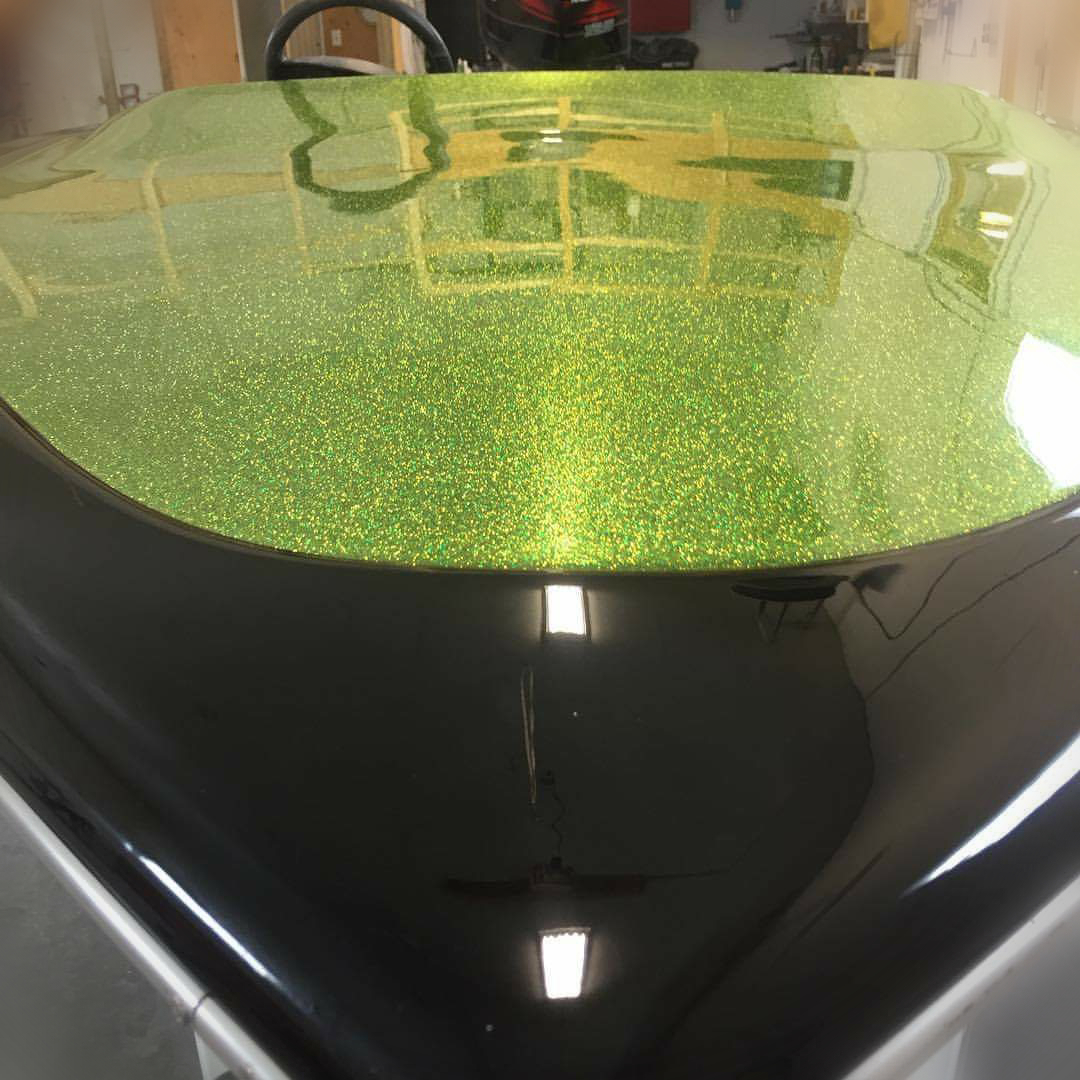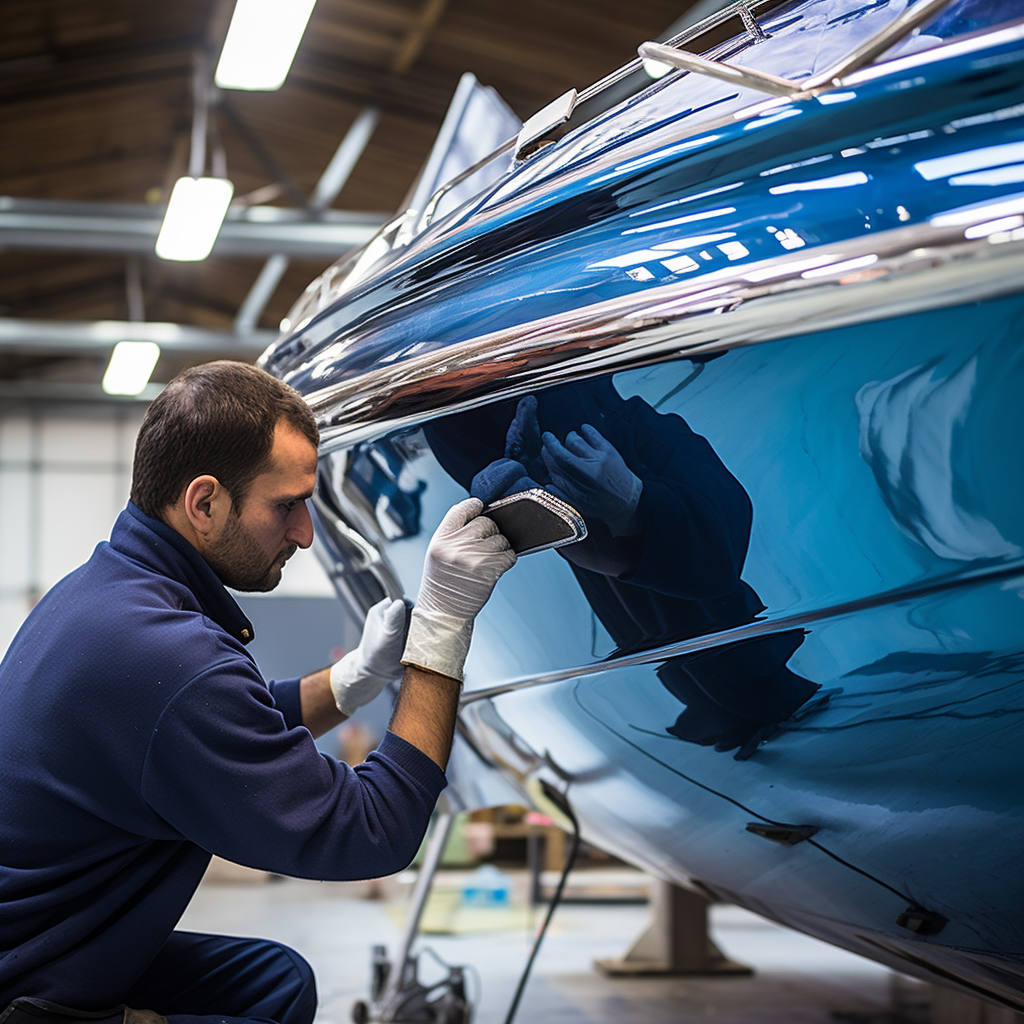DETAIL
buffing vs polishing
As a proud boat owner, you want to take care of your investment. Cleaning it and scheduling specialized services such as buffing a boat, along with polishing and waxing will help to keep it in perfect condition. After extended periods in the water, your boat can begin to show marks around the waterline. Prolonged exposure to the sun’s UV rays will also lead to signs of oxidation. This can leave a boat looking old and unloved. Corrosion and rusting on both saltwater and freshwater boats will also affect appearance and performance. Fortunately, better boat maintenance and restorative techniques will keep your boat in prime condition.

Buffing a Boat vs Polishing
Buffing and polishing a boat sound like fairly similar detailing procedures. People often refer to polishing compounds, boat polishing and rotary polishers when talking about buffing a boat to restore the surface. For example, you can use a polishing compound on a rotary machine to “buff” out scratches. Therefore, with so many interchangeable words and terms it is easy to think of buffing and polishing as one and the same. However, a better understanding of these boat detailing procedures helps to highlight their differences.
Boat Detailing Buffing and Polishing
Buffing a boat does exactly that. It effectively “buffs” the surface of your boat using a high-speed powered tool and a polishing compound. Buffing a boat can be done by hand but it is hard work and time-consuming. A powered tool speeds up the job. The combination of heat, friction and an abrasive product removes scratches, scuffs, oxidation and other imperfections on the boat’s surface. Buffing prepares your boat for the subsequent polishing and waxing.
Polishing your boat, as opposed to using a polishing compound, is what gives it that “good as new” finish. The process is much the same as buffing. Polishing removes any fine scratches or swirls that may have been left behind after compounding. Using a high-gloss polish also creates a brilliant shine and will nourish a boat’s gel coat before waxing. So, if your boat is showing signs of oxidation and needs more than just a clean, it will benefit from a buff, polish and wax.


Buffing vs Polishing Equipment
Different types of boat detailing tools are used for buffing a boat and polishing it. The word “buffing” relates to the specific tool required for the job, i.e, an electric rotary buffer. It is a handheld piece of equipment with different speed settings. Its key feature is the large pad attached to the tool. This pad spins at high speed to create a “buffing” motion. Pads come in different shapes and sizes. Your choice depends on the level of oxidation on your boat. For example, wool pads are generally used when you need to remove heavy oxidation.
When you are polishing your boat, the buffing pad on the rotary tool is simply swapped for a polishing pad or “head”. The types of pads highlight the difference between buffing and polishing and it is important to use the right one for the specific job.
Recommended Technique
Professional detailers are mindful that they are using an abrasive substance when buffing a boat. Therefore, the recommended technique is “slow and steady”. The buffing compound is brushed (painted) or dabbed evenly across the boat’s surface. Alternatively, it can be applied straight onto the buffing pad. You need to keep moving the tool constantly and make sure it is flat to the boat’s surface to achieve the desired results.
The polishing technique is much the same as buffing a boat. Gentle back-and-forth movements with an electric buffer and polishing head will produce a mirror-shine finish. If the polish is applied by hand rather than using a power tool, the detailer will apply the polish with a clean cloth and work in circular motions to achieve even coverage.


When to Carry out Boat Maintenance
The frequency of boat maintenance depends on when and how often your boat gets used. Are you a year-round sailor or do you only take to the water in the warmer summer months? If it is the latter, then think about winterizing your boat after the boating season ends. This includes carrying out any repair work and detailing to keep it in top condition before it goes into storage. It is always better to carry out any repair work prior to storage. Then when it is time to de-winterize your boat and carry out essential checks before you go sailing, it won’t be such a labor intensive, time-consuming job.
If you are hiring a professional detailer, research boat detailing prices first to get a better idea of what you are paying for. Some detailing packages bundle together a buff, polish and wax to give you a better deal.
